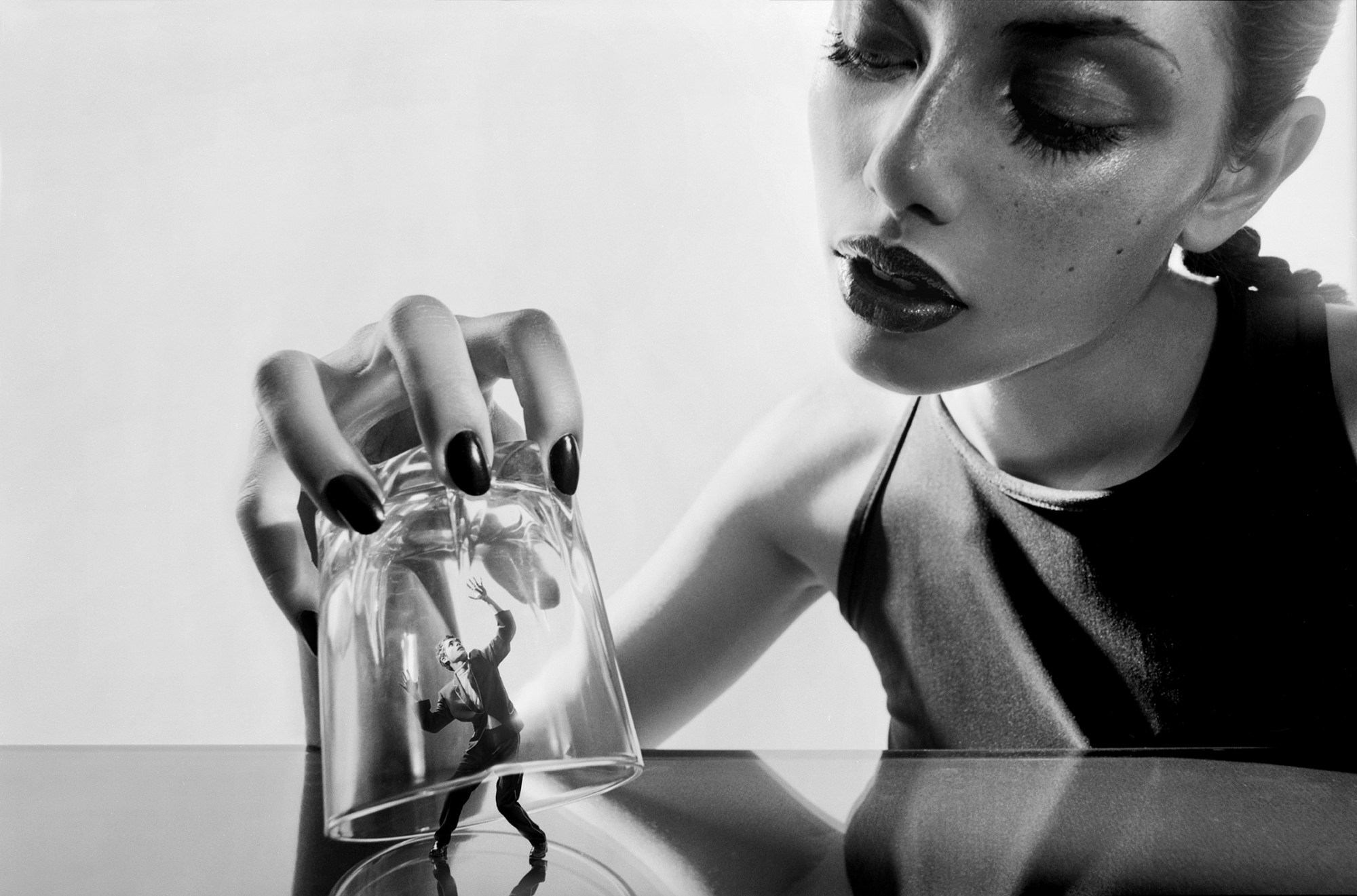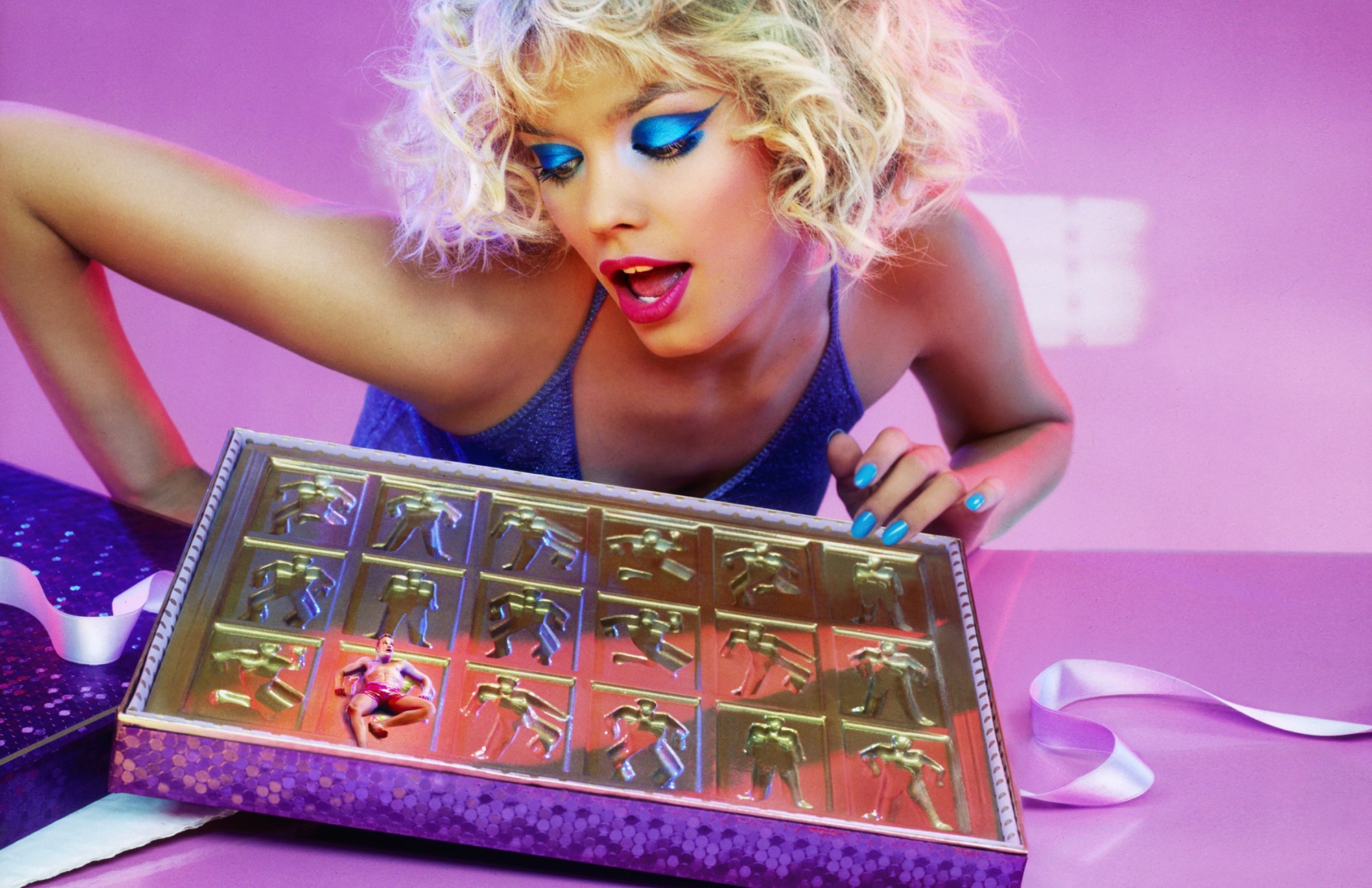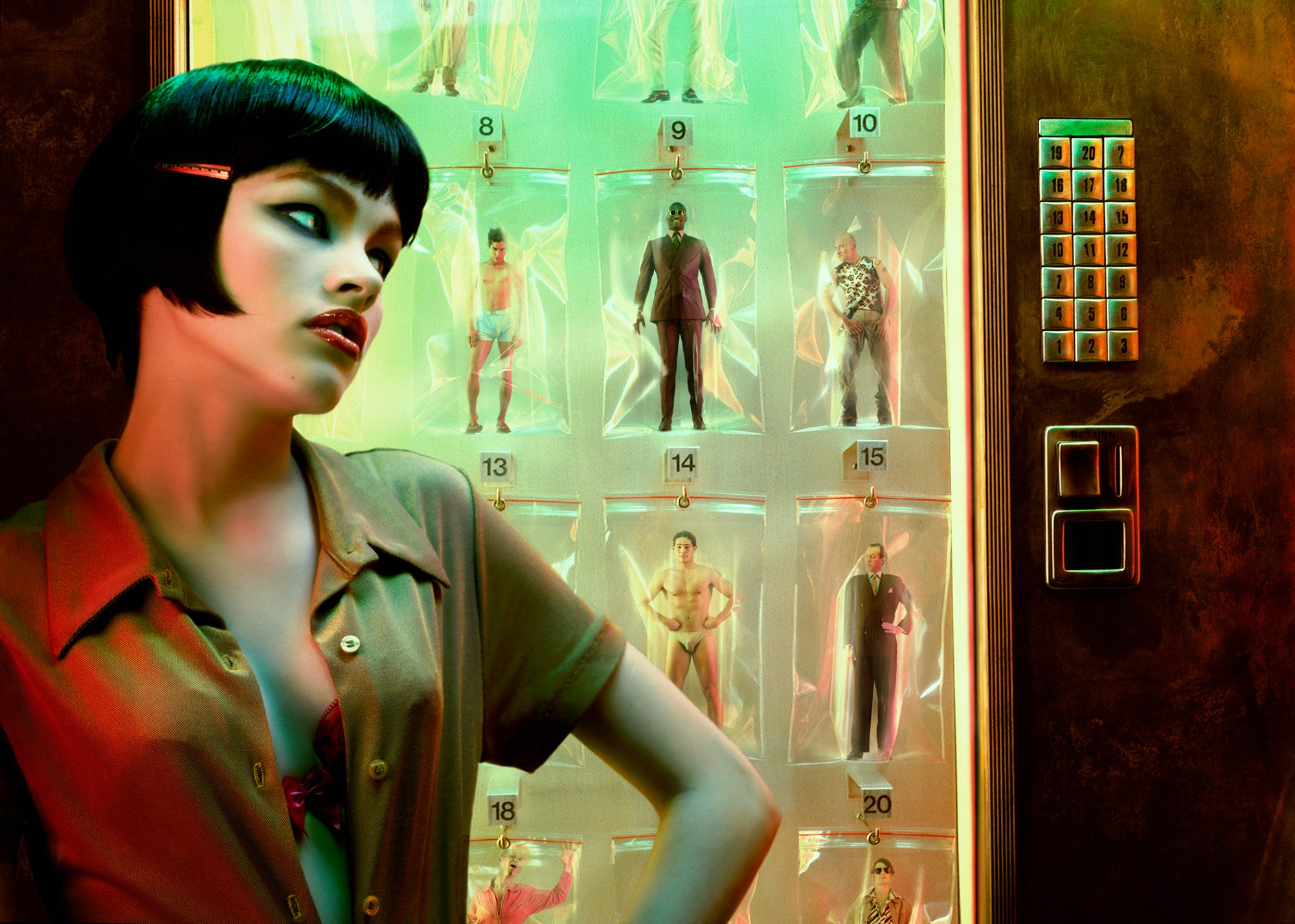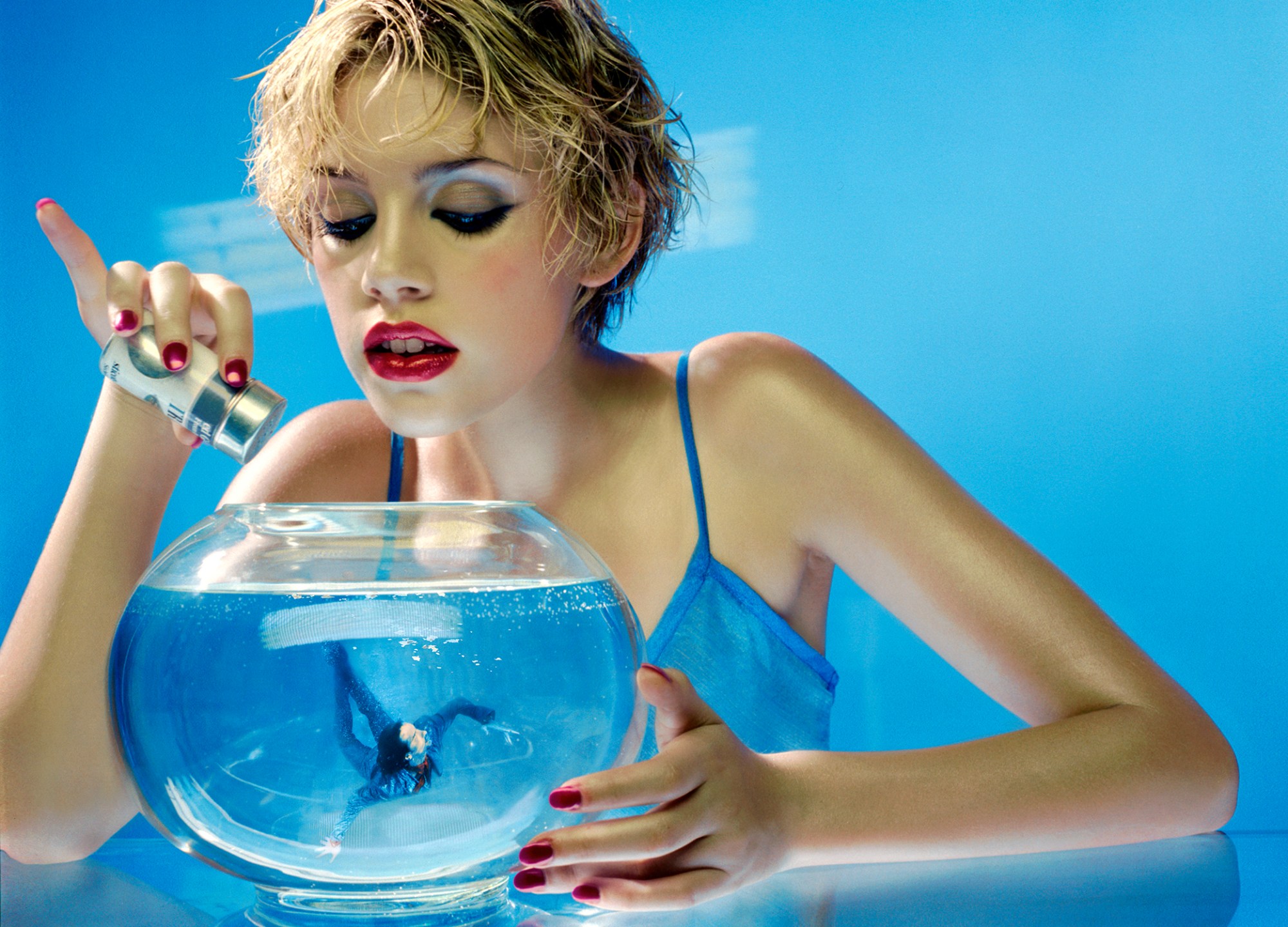The 1958 sci-fi camp classic, Attack of the 50-Foot Woman, was no mere tale of abused socialites, cheating husbands, and alien encounters — it was a landmark film among the macrophilia community. Self-professed “lovers of large”, macrophiles live in a world of fantasy where women of normal size suddenly begin to grow to statuesque proportions. Bursting from their clothes, they are no longer the “weaker sex” but instead become commanding figures of monumental scale, embodying the domain of power traditionally held by men.
Standing in stark contrast, macrophiles are Lilliputian figures whose diminutive size makes them vulnerable to complete and total domination. Some seek to penetrate her body, an experience Niki de Saint Phalle famously created in the 1966 exhibition, She – A Cathedral, an immersive sculpture of a reclining woman that visitors entered through her vagina, then could freely walk and crawl around. Other macrophiles imagine being subjugated, eaten (vorarephilia), trampled under foot, or crushed between gargantuan breasts.

While some may visit specialists in role-play, foot worship, domination, and lifting and carrying, others rely upon the infinite permutations of the imagination to get off. For those who dream of giantesses beyond what Mother Earth can provide, mythology, art, and entertainment can help fill the void. From Ireland to India, the giantess has graced religions and folklore with stories of love and vengeance.
As media began to replace scripture during the 20th century, the giantess found footing in a wide array of books, comics, TV, films, and music videos that reimagined the ancient archetype. From The Muppet Show to Dude, Where’s My Car?, she could be found reclaiming her true domain: the realm of fantasy, pleasure, vengeance, and play.

In 1996, the giantess reached dazzling heights when she became the star of a Kookaï advertising campaign shot by Guzman, the husband and wife photography duo of Constance Hansen and Russell Peacock. By the mid-90s, Connie and Russell had established themselves as a singular force in the commercial world, shooting iconic album covers for Janet Jackson, Hole, Total, k.d. lang, and Luther Vandross. Equally comfortable working with Mike and shooting the Alvin Ailey Dance Group for British GQ, Guzman created images that defined — and transcended — the times in which they were made.
After getting her start in the early 1980s, Connie made her name as a still-life photographer for luxury department stores like Bergdorf Goodman and Lord & Taylor. After bringing Russell on as an assistant in the mid-80s, the two took on the name Guzman to establish a distinct identity to their collective work. At a time when photography duos were unheard of, they began forging their own path, opening the studio after hours to shoot downtown New York nightlife personalities like Marilyn and Dianne Brill.

“We were never fashion or portrait photographers. We were never anything that specific,” Connie says. “We are Guzman. People hire us for our point of view. We love to play and have fun. Our women are really strong, and we like delicate men. I’m a little intense, and Russell is more gentle, so we surround ourselves with fluid-gendered people.”
By the 90s, Guzman was making waves in Paris at a time when photographers were treated like rock stars. Given big budgets and creative freedom, Connie and Russell could innovate and invent a visual language that pushed the boundaries of commercial photography into the realm of fine art. “We had so much work in Paris because there was a tremendous respect for artists by the companies,” Connie says. “Their advertising was different from America, and we fit right in.”

Connie and Russell brought their signature aesthetics to the Kookaï campaign. Working with a large format camera, which required extreme precision for the long exposures, they photographed the men and women individually and then stitched the images together to create a magnificent composite that dazzled the eye. Here, glamazons of the highest order had their way with men, batting them around on the beach, catching them under glass like an exotic butterfly, or deciding which snack they might purchase from a vending machine. Some of the men were hard at work, moving the lawn such as it were, while others broke out the brooms and brushes to spread suntan lotion over a reclining goddess.
The photographs appeared all over the place: in magazines, in train stations, and, most memorably, on billboards, blown up to larger-than-life style. “They were everywhere, and there was a lot of talk,” Connie says of the fashion campaign that was noticeably devoid of many clothes. Although enigmatic images are far more prevalent now, back in the 90s, it was practically unheard of to put the concept ahead of the product.”

Pointing to the picture of a man in a fishbowl, Connie says, “We were doing wacko things. We went to a swimming pool, and Russell put on an oxygen tank and a mask to photograph the guy in the silver suit with an underwater camera.”
As it so happened, that image inadvertently sparked what would become one of Guzman’s most iconic campaigns of the 90s: the mermaid sipping a bottle of Evian underwater. Like their Kookaï campaign, it was a last moment of innocence in a disappearing world that has all but faded away, but for the pictures and the stories tucked away in their archives.
Credits
All images © Guzman
